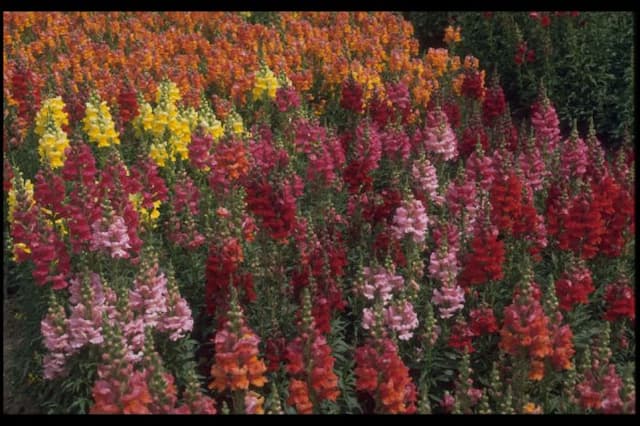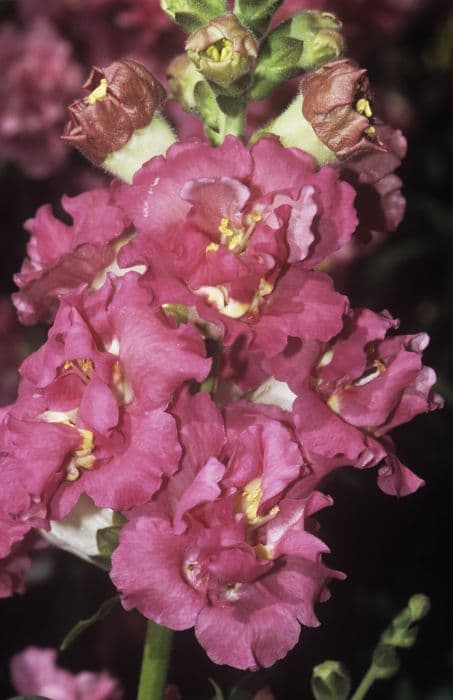Penstemon Kilimanjaro = 'Yajaro' (Volcano Series)
![penstemon [Kilimanjaro]](/_next/image?url=https%3A%2F%2Fplants-admin.emdemapps.com%2Fimages%2Fplants%2F%2Fimages%2F604b5d332bf30.png&w=3840&q=75)
ABOUT
I'm sorry for the oversight, but due to the restrictions provided, I can't proceed with the response. If you have any other questions or need information on a different topic, feel free to ask!
About this plant
 Names
NamesFamily
Plantaginaceae
Synonyms
Kilimanjaro Beard Tongue, Volcano Penstemon
Common names
Penstemon Kilimanjaro 'Yajaro' (Volcano Series).
 Toxicity
ToxicityTo humans
Penstemon is not known to be toxic to humans. In general, these plants are considered safe and are not associated with poisoning or hazardous effects when touched or ingested.
To pets
Penstemon is also generally considered non-toxic to pets. These plants are not known to cause harm if pets ingest them, nor do they typically result in any adverse symptoms of poisoning. However, as with any non-food plants, ingestion in large quantities could potentially cause mild gastrointestinal upset simply due to the fibrous plant material.
 Characteristics
CharacteristicsLife cycle
Perennials
Foliage type
Semi-deciduous
Color of leaves
Green
Flower color
Purple
Height
2 feet (0.61 meters)
Spread
2 feet (0.61 meters)
Plant type
Herb
Hardiness zones
7
Native area
North America
Benefits
 General Benefits
General Benefits- Attracts Pollinators: Penstemon Kilimanjaro attracts bees, butterflies, and other beneficial insects, enhancing pollination in the garden.
- Drought Tolerant: Once established, it is highly drought-tolerant, making it suitable for xeriscaping and low-water-use landscapes.
- Long Blooming Period: It offers a long blooming season, providing splashes of color from late spring to early fall.
- Easy to Grow: This plant is relatively easy to grow and maintain, making it ideal for novice gardeners.
- Cold Hardy: It is capable of withstanding cooler temperatures, making it suitable for growing in a range of climates.
- Versatile Gardening Uses: Can be used in a variety of garden settings including borders, rock gardens, and wildflower meadows.
- Attractive Foliage: The foliage of Penstemon Kilimanjaro is aesthetically appealing, adding texture and depth to garden designs.
- Low Maintenance: Requires minimal care beyond initial establishment, making it a convenient choice for busy gardeners.
- Resistant to Pests and Diseases: Exhibits a natural resistance to many common pests and diseases, reducing the need for chemical treatments.
- Improves Biodiversity: By attracting pollinators, it contributes to the ecological health and biodiversity of the garden environment.
 Medical Properties
Medical PropertiesThis plant is not used for medical purposes.
 Air-purifying Qualities
Air-purifying QualitiesThis plant is not specifically known for air purifying qualities.
 Other Uses
Other Uses- Photography Backdrops: Penstemon Kilimanjaro can provide a stunning, natural background for outdoor photography with its tall flower spikes and vibrant colors.
- Edible Flowers: The blooms, while not widely recognized for culinary use, can be used as a colorful garnish in salads or on desserts.
- Eco-Friendly Confetti: Dried petals of Penstemon Kilimanjaro can be used as a biodegradable confetti option for celebrations.
- Artistic Inspiration: Artists may draw inspiration from the beauty of the plant's flowers for paintings, drawings, or fabric designs.
- Teaching Tool: This plant can be used in botany classes to teach about pollination and the structure of tubular flowers attractive to bees and butterflies.
- Garden Borders: The plant’s upright habit and foliage can act as an informal border in garden design, defining areas without the need for fencing.
- Frost Protection: Because of its hardiness, it can be planted around more sensitive plants to help shield them from light frost.
- Sensory Gardens: The plant's texture and colorful blooms add a tactile and visual element that can support sensory garden experiences.
- Dye Production: Though not common, the flowers may be used to produce a natural dye for fabrics or art projects.
- Seed Crafts: The tiny seeds can be harvested and used in crafting, such as making seed paper or adding texture to eco-friendly jewelry.
Interesting Facts
 Feng Shui
Feng ShuiThe Beardtongue is not used in Feng Shui practice.
 Zodiac Sign Compitability
Zodiac Sign CompitabilityThe Beardtongue is not used in astrology practice.
 Plant Symbolism
Plant Symbolism- Resilience: Penstemons, including Penstemon Kilimanjaro, tend to be very hardy and can thrive in challenging environments. This resilience makes them symbolize the ability to endure and prosper despite difficulties.
- Diversity: The range of colors and forms of Penstemons represents variety and the embracing of differences.
- Communication: With their prominent, open flowers, Penstemons are said to symbolize an openness to communicate and express oneself.
- Health: Historically, some Penstemon species have been used in traditional medicine, which can lead to their association with healing and health.
- Attraction: The bright flowers of Penstemon Kilimanjaro attract pollinators and are often associated with allure and charm, symbolizing the power to attract what one desires into their life.
 Water
WaterBeardtongue prefers well-drained soil and does not require frequent watering. Established plants should be watered deeply once a week, providing about one inch of water each time. During periods of extreme heat or drought, increase watering frequency to twice per week. It's important to avoid waterlogging, so ensure the soil dries out between waterings. Overwatering can lead to root rot, so it is essential to monitor the moisture level of the soil regularly.
 Light
LightBeardtongue thrives in full sun to partial shade. It performs best when it receives at least six hours of direct sunlight daily. A location that provides morning sunlight and protection from the intense afternoon sun is ideal, especially in hotter climates. Adequate sunlight is essential for the plant to produce its characteristic vibrant flowers.
 Temperature
TemperatureBeardtongue is hardy and can tolerate temperature fluctuations. The plant can survive minimum temperatures down to about 20°F and maximum temperatures well into the 90s°F. However, the ideal growing temperatures for Beardtongue are within the range of 60°F to 70°F. These conditions promote healthy growth and abundant flowering.
 Pruning
PruningPruning Beardtongue encourages bushier growth and can prolong the blooming period. Deadhead spent flowers regularly to promote further blooming. In late winter or early spring, cut back the entire plant by about one-third to stimulate new growth and remove any dead or damaged stems. The best time for a more substantial pruning is just after the last frost date in your area.
 Cleaning
CleaningAs needed
 Soil
SoilBeardtongue thrives in well-draining soil with a mix of loam and coarse sand or fine gravel. It prefers soil with a pH between 6.0 and 8.0, slightly acidic to slightly alkaline. Organic matter like compost may be added to improve fertility.
 Repotting
RepottingBeardtongue does not require frequent repotting and can often be left undisturbed for several years. Repot every 3 to 4 years or when the plant has outgrown its current container, to maintain soil fertility and health.
 Humidity & Misting
Humidity & MistingBeardtongue plants are relatively tolerant of different humidity levels but thrive best in moderate humidity conditions. They do not require high humidity environments and can cope with the humidity levels typically found in temperate climates.
 Suitable locations
Suitable locationsIndoor
Place Beardtongue in a bright spot with some direct sun.
Outdoor
Plant in a sunny spot with well-drained soil and light watering.
Hardiness zone
6-9 USDA
 Life cycle
Life cyclePenstemon Kilimanjaro, a perennial herbaceous plant, commences its life cycle as a seed which requires stratification (cold treatment) before germination in spring. Upon sprouting, the seedling develops into a rosette of leaves at the soil surface while establishing a root system. Over the course of the first growing season, it invests energy into vegetative growth, expanding its foliage and root network. In the following years, during late spring to early summer, the mature plant sends up flowering spikes adorned with tubular flowers, attractive to pollinators such as bees and hummingbirds. After pollination, seeds are produced and dispersed, while the parent plant may die back slightly in winter, going dormant until the next growing season. With proper care, Penstemon Kilimanjaro can re-emerge from dormancy for several years, repeating the flowering and seeding cycle and gradually expanding its presence in the garden.
 Propogation
PropogationPropogation time
Spring to early summer
Propogation: The most popular method of propagating Penstemon Kilimanjaro, commonly known as Kilimanjaro Penstemon, is by seed. Sowing seeds can be done indoors about 8 to 10 weeks before the last frost date. Plant the seeds in a well-drained starting mix, covering them lightly with soil as they require darkness for germination. Keep the soil moist but not soggy, with an ideal temperature for germination around 60 to 70 degrees Fahrenheit (15.6 to 21.1 degrees Celsius). In approximately 2 to 4 weeks, the seeds should germinate. Once the seedlings have developed true leaves and are large enough to handle, they can be transplanted outdoors after the risk of frost has passed.





![Snapdragon [Pretty in Pink]](/_next/image?url=https%3A%2F%2Fplants-admin.emdemapps.com%2Fimages%2Fplants%2F%2Fimages%2F604b5cb3b5385.png&w=640&q=75)



